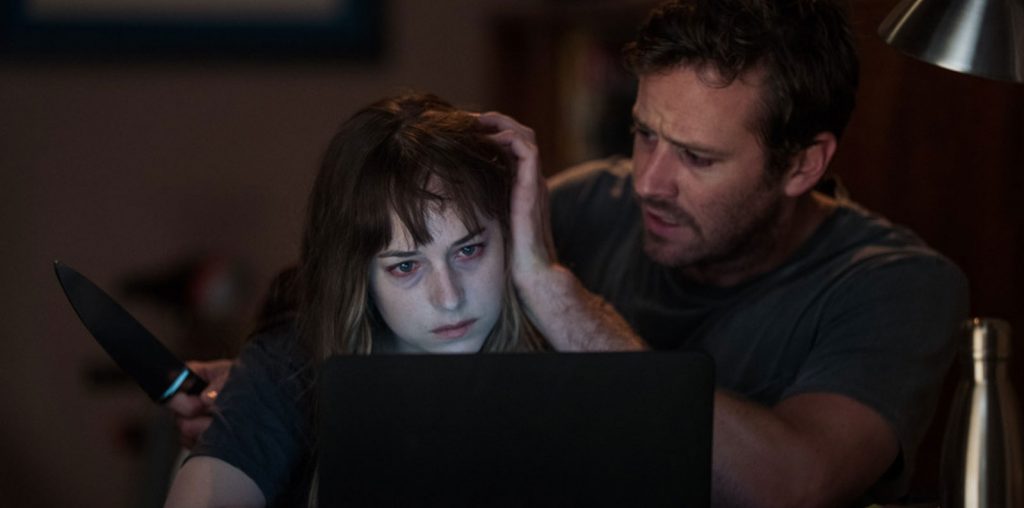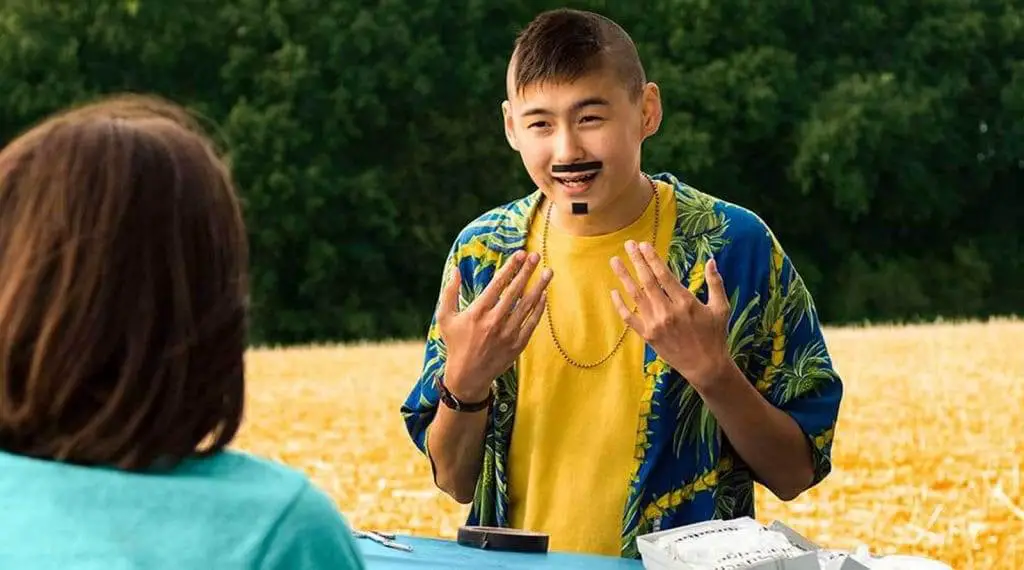
The last time I checked in with the adventures of amnesiac, alien philosopher Mozzman was over a year ago, and I was not very impressed. My criticism of the Mozzman aesthetic then was that the footage often seemed to be random bits thrown together and given meaning via voiceover and subtitled exposition, as opposed to there being a real purpose to each shot. In the case of the latest Mozzman film, a feature entitled Journey to Mt. Fuji, I’m happy to say that the narrative feels more deliberate and together, even if it does fall back on old tricks more than a few times.
In this story, children are playing in the park, waiting for Mozzman (Yukita Kusunoki), who is enjoying his favorite amusement park ride, to arrive. Upon Mozzman’s arrival, two of the children are attacked by an evil force, and Mozzman tries to save them. Unfortunately, he runs dry of the elixir needed to free both children from their comatose state and poor little Saeko (Hana Watanabe) is left in said coma while Mozzman searches for a way to save her.
Mozzman’s journey takes him to Mt. Fuji, where he meets a blind Frenchman named King Karmen (director Cris Ubermann), who explains to Mozzman the tests and challenges that await him in his attempt to complete his journey. As Mozzman endures these dangers, he also finds himself remembering his past and his purpose, both in saving young Saeko and the planet in general, becomes more clear.
To be perfectly honest, when I sat down to watch this feature film, there was a bit of apprehension that I was in for more of the same, almost incomprehensible, forced importance that I previously endured. To which I can say, yes, Journey to Mt. Fuji has a bit of it in there, but, for a Mozzman tale taking place over 80 minutes, there’s a real narrative flow and story to this one.
There’s also a lot of footage of Mozzman walking around slowly and looking at things, intercut with a visual cornucopia of effects and compositions. I’d be hard-pressed to remember a single frame of the film that doesn’t feel like it had some digital work done to it, or other imagery layered over top. In its best moments, it is striking and beautiful; in its worst, confusing and off-putting. Regardless, there’s quite a bit of it, though save for the Mozzman aesthetic-friendly landscape shots, it seems to serve more of a narrative function; it alerts us to the presence of the evil force, for example, or sets the scene for a memory.
The score also does quite a bit of heavy-lifting as far as propelling the story forward, and rightfully so. There are moments where, if the score wasn’t pushing jauntily ahead, you’d be taken out of the scene entirely. I’m sure it could be argued that the score also, at times, seems more jubilant than the sometimes melancholic look of Mozzman would deserve but, again, that’s where it supplies drive to the story that otherwise wouldn’t be there if we were stuck staring at morose Mozzman as he stares back at us.
Did I necessarily get the story this time around? Maybe. I think I’m starting to make more sense of this Mozzman stuff, though I wouldn’t mind it if there were a book or a comic book series that I could retreat to in order to fill in the blanks. I agree that a film should be able to stand alone, and to a certain extent this one does, but there’s so much other stuff going on that I feel like a different storytelling medium, one that would allow for more breadth in the back story, and is more friendly to exposition, could be helpful.
I don’t know that this needed to be almost 80 minutes long; the story didn’t really pick up, for me, until about 30 or so minutes in when Mozzman meets King Karmen. Once that meeting occurs, it seems that the narrative drives forward at a better pace, giving us insight into Mozzman’s past while also introducing new characters and, for the most part, keeping the story moving toward the salvation of the comatose Saeko. But those first 30 minutes are challenging, as the film’s setup of the children in the park and Mozzman enjoying the amusement park ride seems to go nowhere, and once the main plot is set in motion, Mozzman’s initial wanderings seem equally as aimless. And since, again, there is enough footage that seems to exist solely because it looks cool (even more so when coupled with layer visual effects trickery), the film could definitely find an even tighter pace, if it so wanted.
Save for Mozzman’s lack of dialogue, the filmmakers seem to err more on the side of indulgence than in scarcity, which may be why things can feel overly manipulated visually or scenes to linger longer than what may seem necessary. Still, when it works, the imagery is powerful and the aesthetic memorable. I don’t think anyone will ever criticize the film for not looking cool enough; they just might, like I have done in the past, criticize it for being a case of style over substance.
In the end, Journey to Mt. Fuji is, of the two Mozzman films I’ve seen, my favorite of the two. Whether or not I entirely understood the back story going on behind the scenes, the narrative structure was simple enough to follow, and executed well enough. I don’t know if the next film will continue with the same tone and mood as this one, but there’s enough of a difference between the two films that I’ve seen to make me more open to seeing where the story might go next. I think the films might be getting more accessible than simply experimental, and I don’t think they’re too far off from the type of film that truly delivers on the ideas the filmmakers are attempting to share.
This film was submitted for review through our Submission for Review system. If you have a film you’d like us to see, and we aren’t already looking into it on our own, you too can utilize this service.


